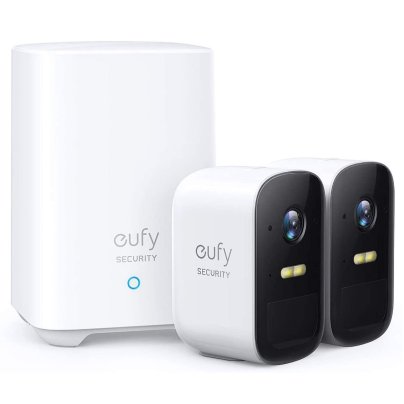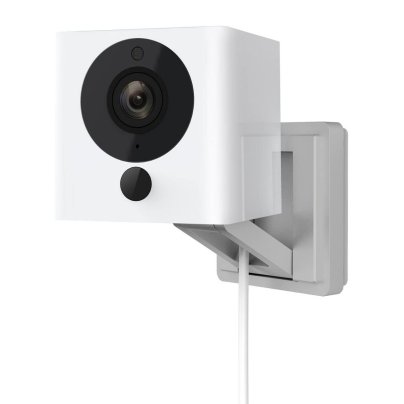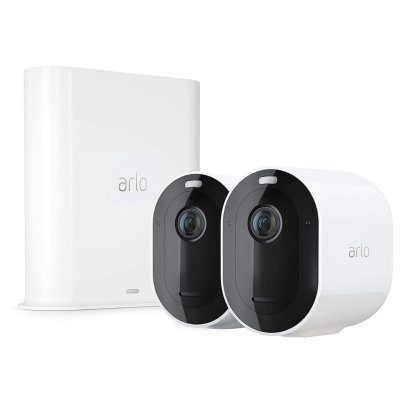We may earn revenue from the products available on this page and participate in affiliate programs. Learn More ›
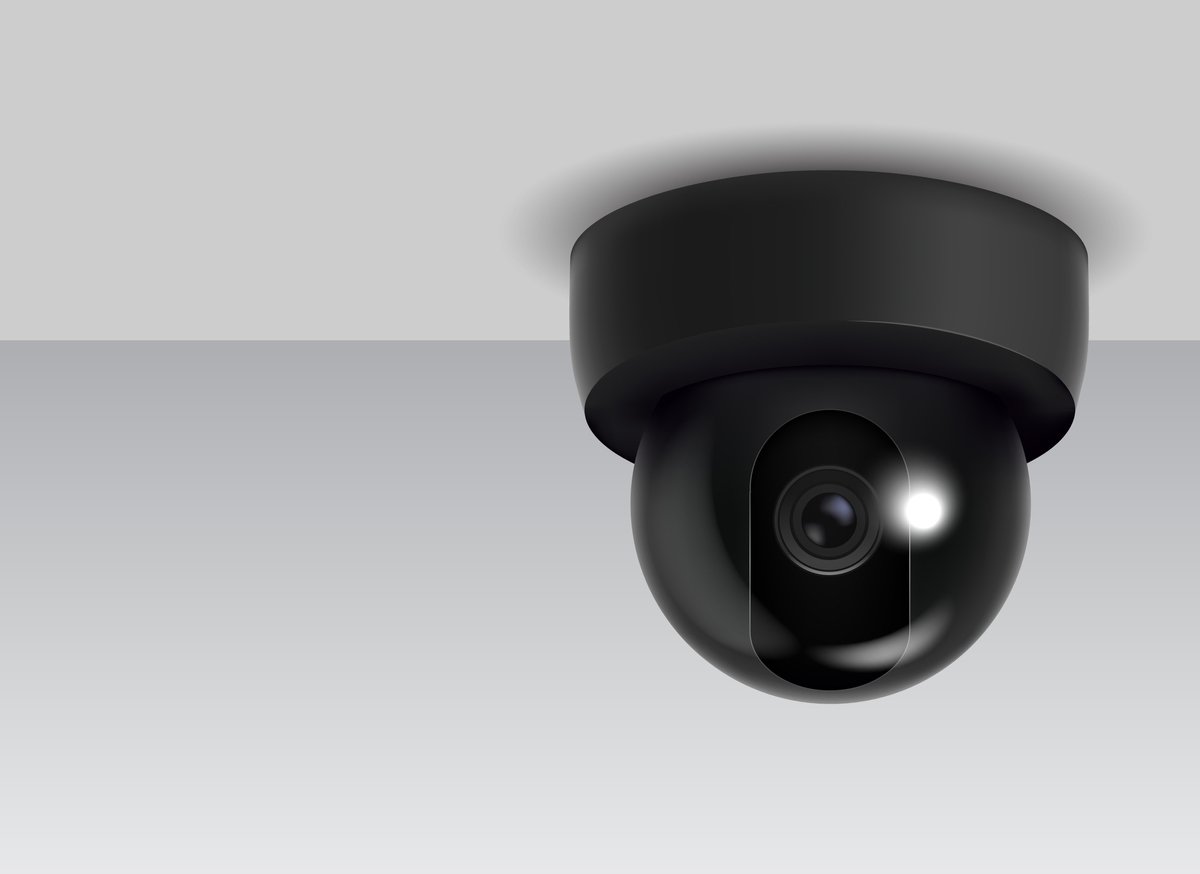
Indoor cameras have been a regular part of security systems for years. You can mount one at a shared entrance to track people coming in and out of a home or install one in a nursery to keep your eyes on your little one. No matter the location, the goal is to provide safety, security, and peace of mind to those living in the home.
Modern security cameras no longer require bulky accessories or feature low-quality recordings and images. The best indoor security cameras today use infrared lighting for night vision, automatic storage online or through an app, and even two-way talk features to inform intruders you’ve contacted the authorities. With the bidirectional function, you can also speak directly with your children, pets, or significant other. The products below represent the best indoor security cameras in their respective categories.
- BEST CHOICE: eufy Wireless Home Security Camera
- BEST BANG FOR THE BUCK: Wyze Cam Indoor Wireless Smart Home Camera
- UPGRADE PICK: Arlo Pro 3 – Wire-Free 2 Camera System
- BEST WIRELESS: Wansview Wireless Security Camera
- BEST TWO-WAY AUDIO: HeimVision Indoor Security Camera
- BEST FOR SMART HOMES: Wyze Cam Pan Indoor Smart Home Camera
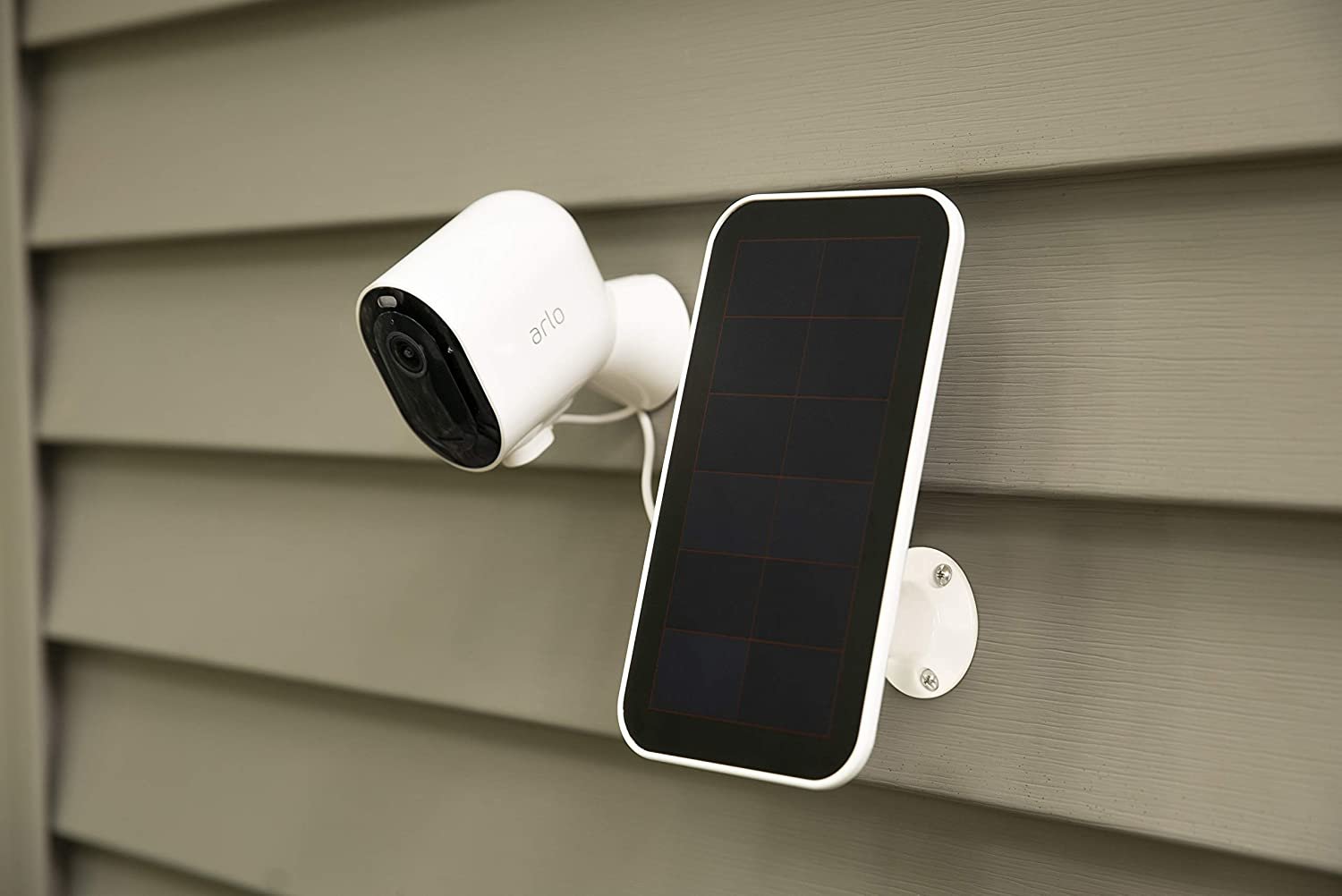
What to Consider When Buying an Indoor Home Security Camera
Before deciding on a camera for your home, consider these common features, and choose those that are necessary for your desired setup. Must-have features should be your starting point so you end up with a model that does everything you need it to.
Resolution
Indoor security cameras come with specific resolution standards, with most security cameras recording at 1080p, which may seem high, after all, 1080p is considered high definition (HD). But compared to 4K resolution (2160p), HD recordings are a poor substitute. Resolution options range from 720p to 2160p, and the price of the camera increases with resolution.
Keep your needs in mind when selecting for resolution. If the primary purpose of the camera is to communicate with your pets when you are not around, you probably don’t need a 4K camera. However, if you intend to use the camera as the primary security source in your home, you may want to invest in a more expensive, higher-resolution camera so that facial and other identification features are clear.
Motion Detection
Indoor security cameras with motion detection features use built-in sensors to pick up movement within the camera’s field of view. When these sensors detect movement, they indicate to the camera to begin recording. Some cameras even come with movement options, like panning or tilting, to follow the object in motion.
An indoor security camera with motion detection is a great way to ensure that an empty house is genuinely empty or to keep track of your toddler’s movements in the morning. Some cameras will even send instant notifications to your mobile phone whenever motion is detected.
Night Vision
Cameras without night vision are mostly useless during the darkest hours and may even suffer in darker rooms during daylight hours. Due to this obvious flaw, most security cameras now include night vision enhancements that record video using infrared lighting.
The range of the infrared light depends on the camera. Some only have a range of 16 feet, while others maintain a clear field of vision for up to 50 feet. For nursery cameras, this won’t matter much, but an indoor camera with a range of 16 feet may not be the best option for larger rooms or entranceways if the required field of vision goes beyond the scope of the infrared lighting. Consider your security needs when selecting night vision enhancements.
Cloud Storage
The cloud is the general name used to refer to online data storage. Many camera manufacturers or sellers offer instant data backup on an online server for instant access and ongoing data storage. However, these companies are not going to store the data for free.
Monthly and yearly subscriptions are offered by some companies to store security camera data. Other companies include a set amount of ‘free’ data or bandwidth space with their camera, but begin charging after the data exceeds a set amount of recorded footage or a storage limit.
Consider whether you will be able to purge the recorded video from the storage site every time within the allotted ‘free’ time or storage limit. If you are someone who forgets things easily, you could find yourself with a rapidly accumulating bill. In that case, a subscription may save you the hassle and possibly a few dollars in the long run.
Alternatively, some cameras store data directly to an SD card, but this card can also fill up quickly, with higher-resolution camera recordings taking up significantly more storage space.
Battery Backup
Many indoor security cameras plug directly into an outlet. These devices don’t need batteries changed or recharged, though they do suffer from a couple of problems. The first being that the length of the cord limits where you can place it, and the second that power outages can disrupt the camera’s operation.
To make up for this limitation, some indoor security camera manufacturers have started to include backup battery systems in their security cameras. When the power goes out, the camera automatically shifts to its backup power system for uninterrupted recording. If you have to go with a corded option, consider a product with a backup battery for enhanced security.
Mobile App and Alerts
Indoor security cameras have benefited from the recent innovation in the field of mobile apps. Most cameras can now be integrated with a manufacturer-designed mobile application that can show a live stream from the camera, receive motion-detection and facial-recognition alerts, or even communicate with pets, kids, and significant others through built-in microphones and speakers.
Smart devices and smart homes are becoming a popular trend in the modern home, and indoor security cameras fit perfectly into that ecosystem. Smart home-compatible cameras can be voice-activated, video can be streamed directly from the camera to the smart TV, or alerts can be programmed to sound through smart home speakers.
Wireless Range
The average wireless camera has a range between 250 to 500 feet in an open environment. However, in a closed environment like a house, the range drops to between 100 to 165 feet. This range can degrade if the signal has to pass through brick, concrete, or thick floors. Drywall and windows don’t normally degrade the signal, but the camera placement should be in direct view of the receiver whenever possible.
Most camera manufacturers do not advertise a specific range because there are so many factors that can interfere with a signal’s strength, including physical barriers or the unit’s frequency. Devices operating on the same frequency as the camera can interfere with signal range, strength, and consistency.
Additional Features
On top of the features already mentioned, some cameras take innovation further and include unique characteristics such as two-way communication, facial-recognition, or pet-friendly options.
- Two-way communication uses a microphone and speakers on the camera and your mobile phone to communicate directly through the camera.
- Facial-recognition technology is beginning to be used by security cameras, tracking familiar faces, and sending alerts when unfamiliar faces are detected.
- Pet-friendly options can have built-in laser pointers or a snack release feature that you control through an app.
Nursery cameras are also a growing trend, and top brands are beginning to include baby crying detection features.
Our Top Picks
With those buying factors in mind, we chose the best indoor security cameras available, also taking into account price, effectiveness, and reputation.
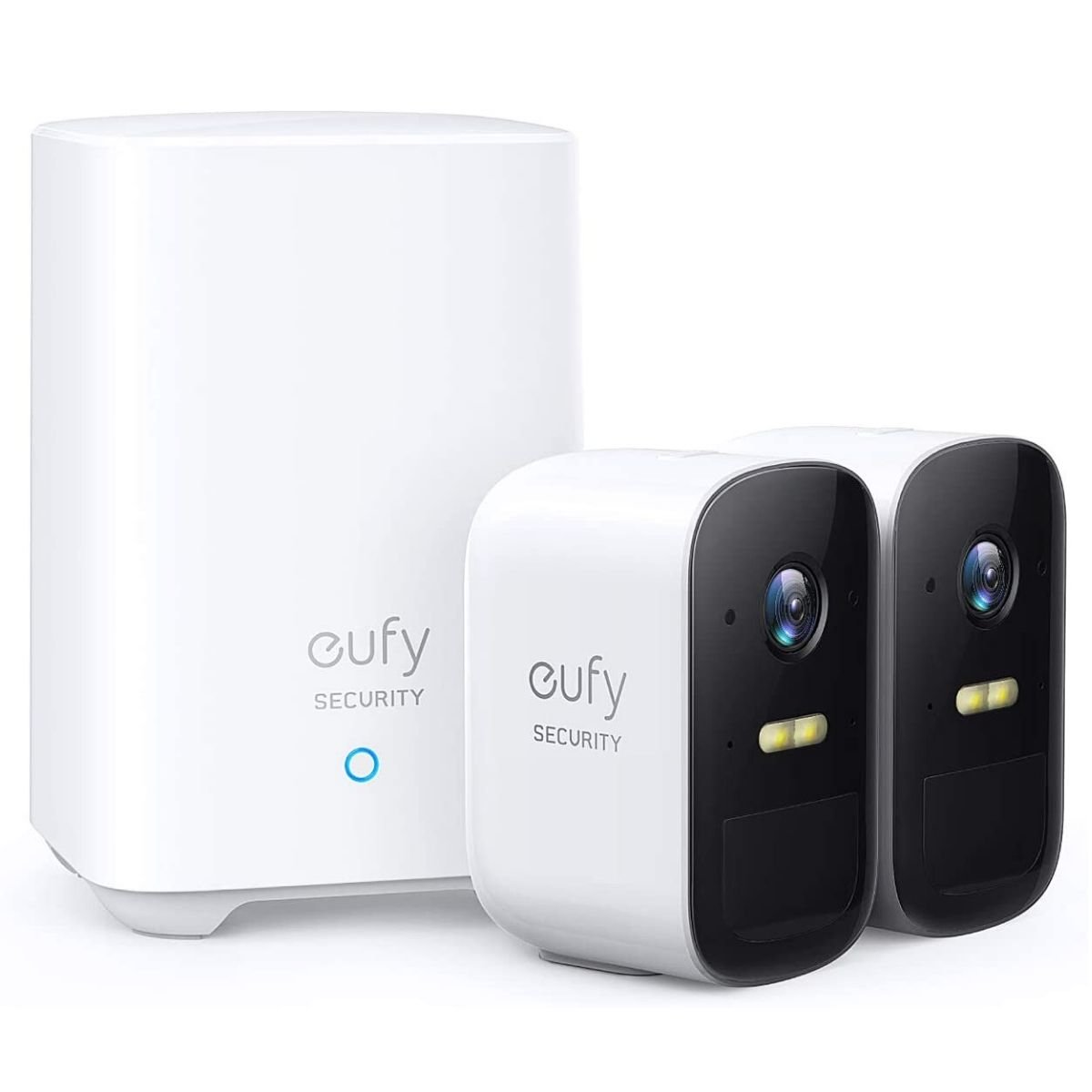
1. BEST OVERALL: eufy Wireless Home Security Camera
The 1080p HD quality resolution of the eufy Wireless Home Security Camera provides superior video and audio recording within its 135-degree field of view. The camera uses human detection features to differentiate between a pet, vehicle, or person so that you only receive the notifications that matter.
A built-in spotlight and infrared night vision make night time security simple. The spotlight can be switched on or off using the app, or with voice-control through smart home integration. The manufacturer also boasts military-level encryption to keep your data safe from hackers.
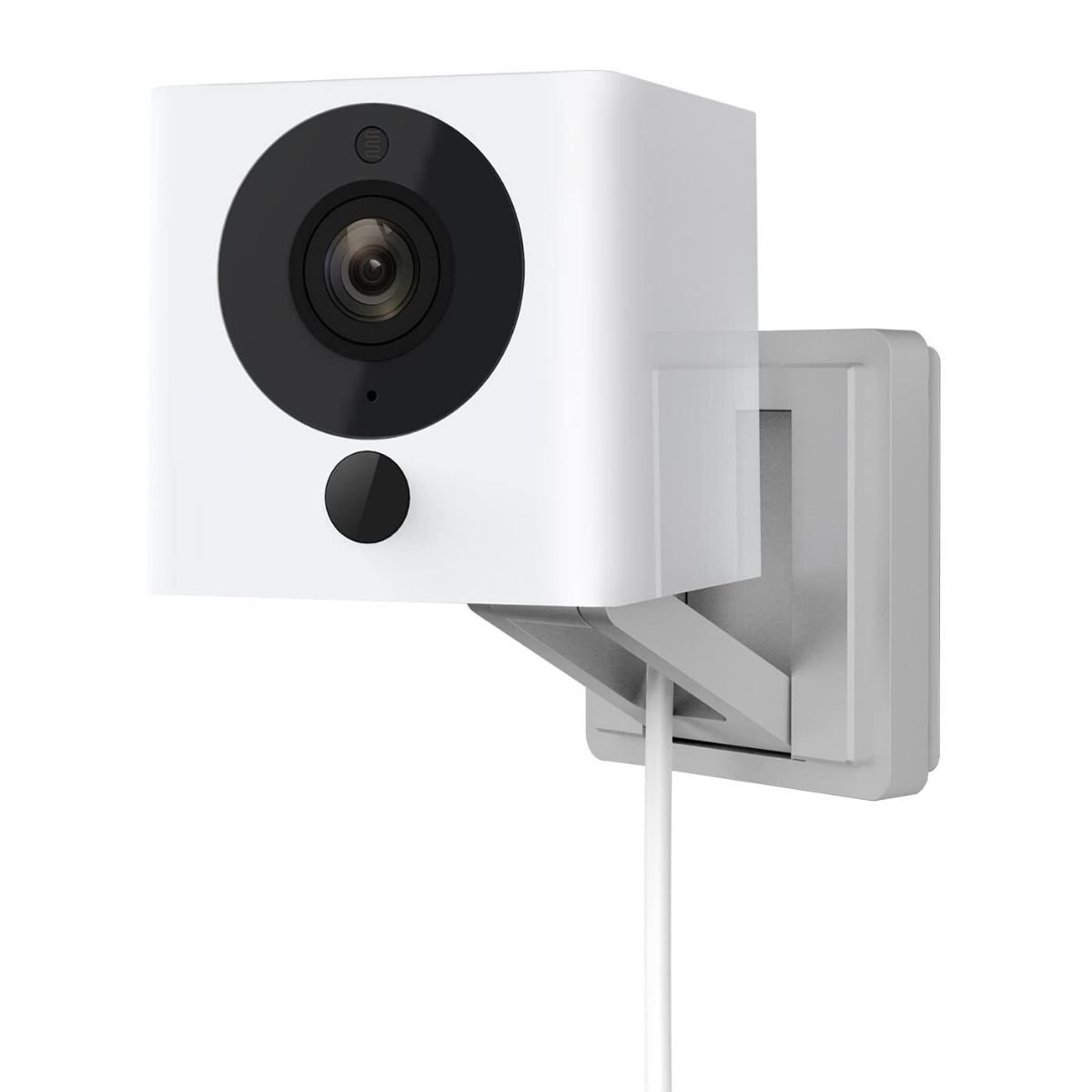
2. BEST BANG FOR THE BUCK: Wyze Cam Indoor Wireless Smart Home Camera
With the Wyze Cam Indoor Wireless Smart Home Camera, high-definition recordings at 1080p can be uploaded to the cloud or streamed live through your mobile phone or device. Built-in motion detection technology automatically records a 12-second video clip when the camera detects movement and saves it to the cloud.
This camera is a value pick for more than its low price. You also avoid monthly fees and subscriptions. Instead of paying for storage, data saved to the cloud is kept for 14 days before being deleted automatically. Included night vision with a range of 30 feet gives a clear view of the surroundings any time of day.
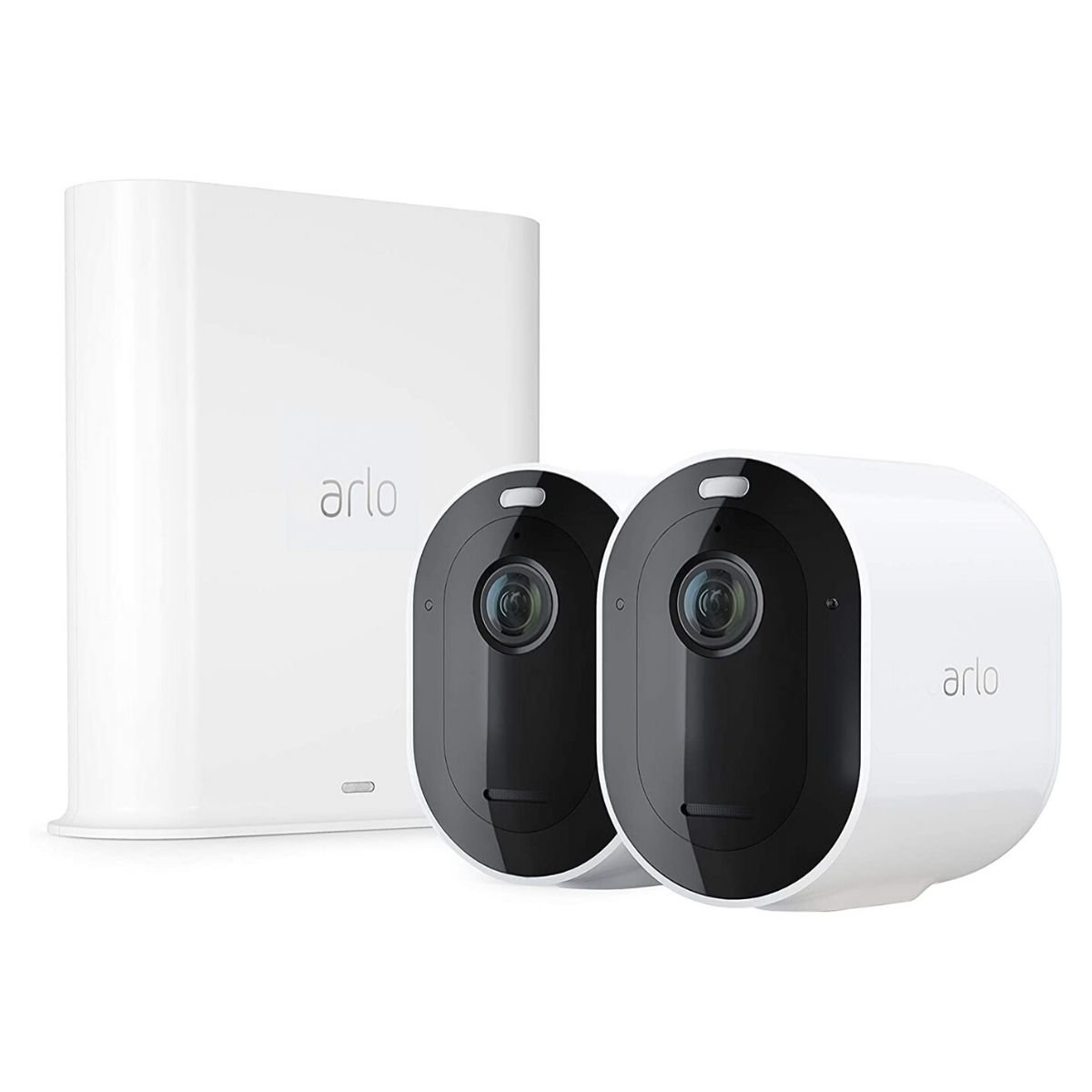
3. UPGRADE PICK: Arlo Pro 3 – Wire-Free 2 Camera System
The 1440p resolution of the Arlo Pro 3 – Wire-Free 2 Camera System provides superior recording clarity. The smart home-compatible camera links easily with Amazon Alexa and Google Assistant using the Arlo smart service. A monthly subscription is needed, but at least the first 3 months are free.
You can take night vision recordings using an integrated spotlight for full-color vision or using infrared lighting. The built-in motion detection can distinguish between pets and people, quickly sending real-time alerts to your mobile phone when movement is detected. The 160-degree field of vision isn’t the best, but the clarity of the image overcomes the lack of panning or tilting with this premium purchase.
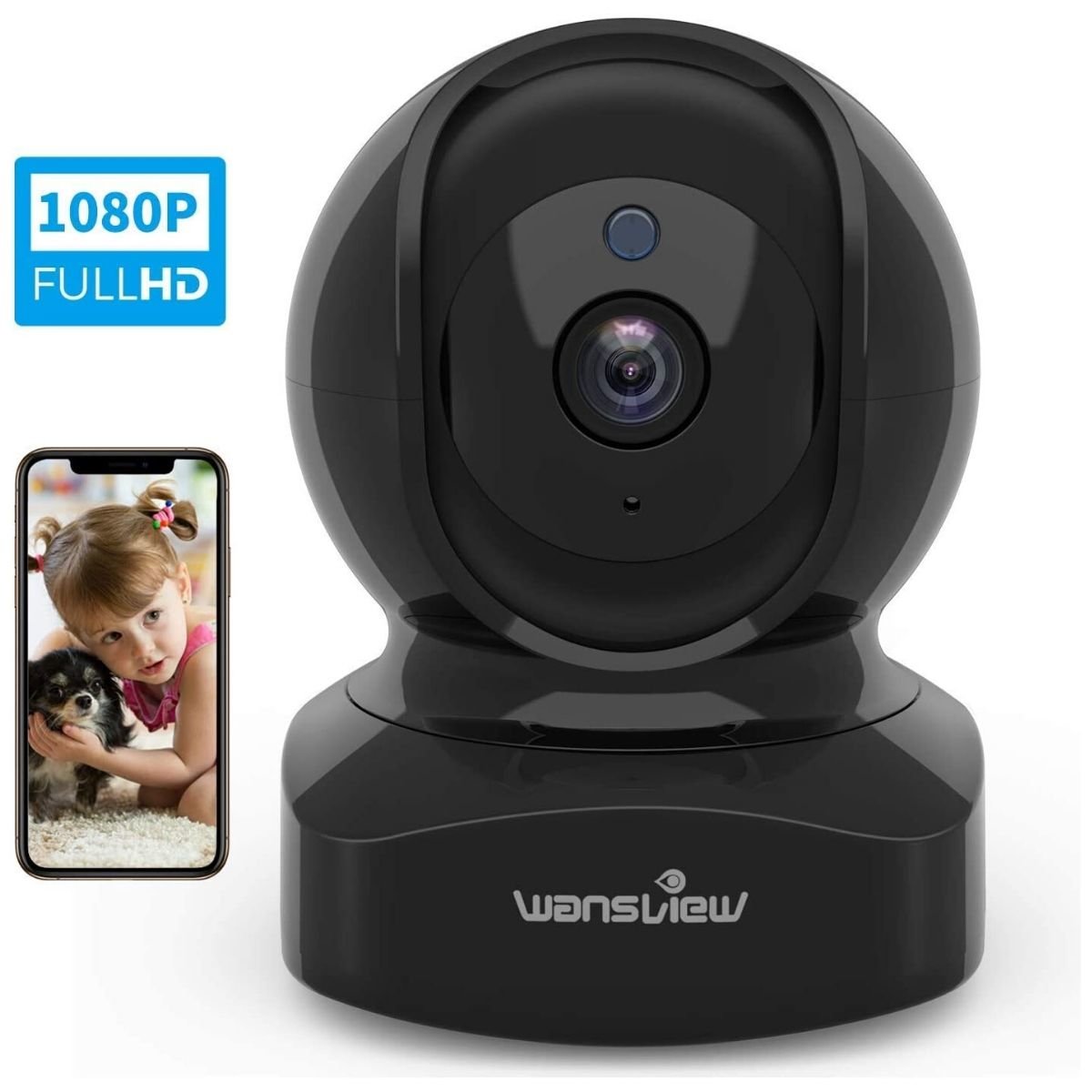
4. BEST WIRELESS: Wansview Wireless Security Camera
The Wansview Wireless Security Camera can be placed anywhere you need it to record. Place it on a table, mount it on the wall, or even hang it from the ceiling for the best wireless security coverage. The camera can record video at 1080p resolution in a 360-degree field of view, due to its ability to pan and tilt.
Live video and two-way audio are accessible through your mobile phone, and smart home integration allows the camera to be voice-controlled. The modest 16-foot night vision range doesn’t make it great for large spaces, but as a residential indoor security camera, this range isn’t a significant concern. Motion detection features automatically record 10 seconds of video stored in the cloud or on a local SD card.
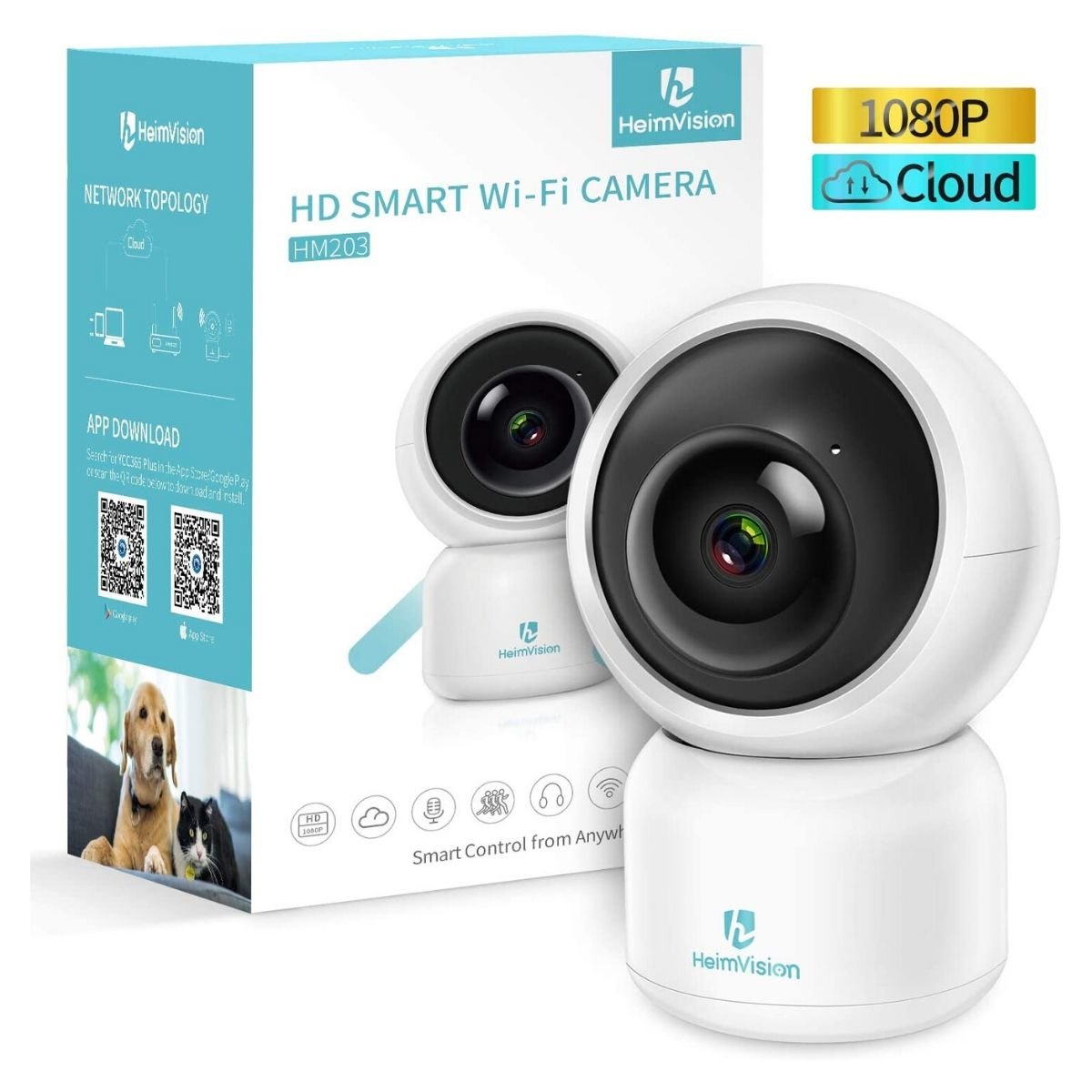
5. BEST TWO-WAY AUDIO: HeimVision Indoor Security Camera
The HeimVision Indoor Security Camera is impressive as a baby, pet, or nanny monitor with built-in two-way audio that uses anti-noise technology in the microphone and speakers to block out ambient noise for clear communication. The 1080p resolution records a 360-degree panoramic view, thanks to the camera’s ability to pan and tilt.
Motion detection sensors send real-time alerts to your mobile phone if motion is detected when you are away. Auto-tracking can also be used to follow a wandering baby in their crib or a restless pet in the home. The camera boasts an impressive 50-foot night vision range, and it supports both cloud and local SD card storage.
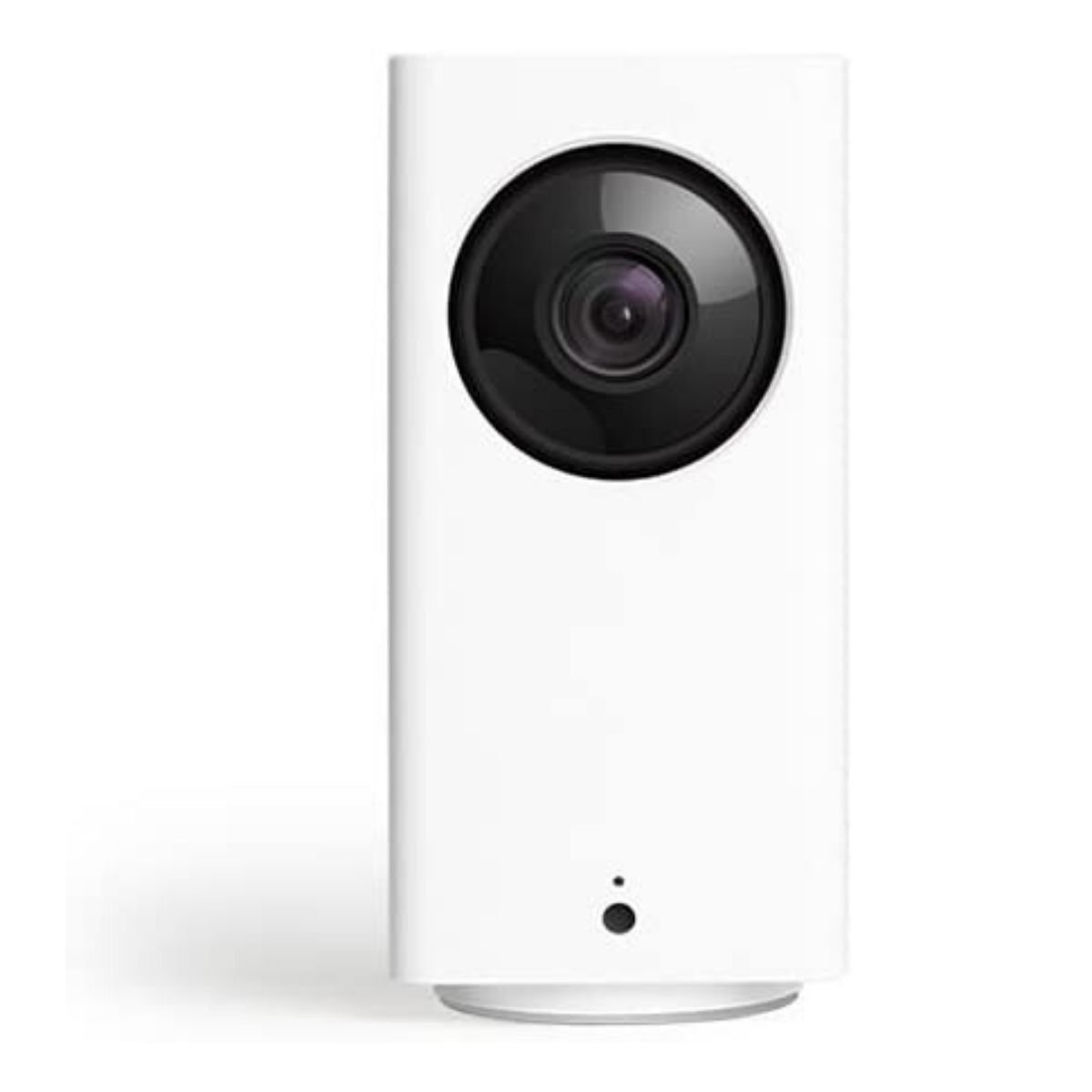
6. BEST FOR SMART HOMES: Wyze Cam Pan Indoor Smart Home Camera
You can pan, tilt, and zoom using the Wyze app on your smartphone for a 360-degree horizontal range and 110-degree per-second rotation speed. The Wyze Cam Pan Indoor Smart Home Camera uses two-way audio when it connects with smart home ecosystems. Live video streams in 1080p resolution and voice-controlled movement and activation provide a comprehensive view of your home security.
You can also save some money by avoiding ongoing fees. Data is saved to the cloud for 14 days and deleted free of charge afterward. The 30-foot night vision coverage provides clear recordings during the darkest hours, keeping you secure, and sending alerts to your phone if motion is detected.
Tips for Using Indoor Security Cameras
Using an indoor security camera seems simple, and it can be if you know what you’re doing.
Before placing the camera, consider the entrances and the most-used rooms in the home. Interior corner placement gives the camera a full, unimpeded view of the room, while doors and accessible windows are highly suggested locations for enhanced security. However, cameras should be set to avoid any direct lighting from lamps, window reflections, or ceiling lights, as direct lighting will wash out the footage.
Even with a security camera, you’ll want to keep security in mind. Cameras can be hacked from outside sources. To help prevent this, make sure the camera you purchase is from a recognized manufacturer and a trusted seller. Large, popular brands are not as likely to be hacked because of superior encryption technology. Beyond buying a great camera, make sure that your home network is secure, and you change all system and camera passwords regularly. This includes the Wi-Fi password, password on the camera itself, and even the password to the app on your phone.
When selecting a camera for security, keep in mind that indoor security cameras are not an excellent option for outdoor protection. Placing them outside will result in damage from the elements, but putting them inside the home facing out through a window might be even less effective. The refraction of light through the windowpane will distort the recording. At best, you will receive a slightly distorted recording, but at worst, the image will be unidentifiable. If outdoor security is the goal, purchase an outdoor security camera.
- Buy a camera with a popular manufacturer and from a recognized and trustworthy seller.
- Ensure your home network is secure.
- Any access to the camera should be protected with a strong password. This includes the camera, the Wi-Fi, and any apps that can access the camera.
- Use interior corners to your advantage by placing cameras in the corner of the room to give the broadest possible field of vision.
- Direct light from a lamp, ceiling light, or the sun will wash out footage. Angle the camera for indirect lighting.
- Indoor cameras are not the best option for outdoor protection. Window reflections reduce accuracy when recording and capturing images.
FAQs About Your New Indoor Security Camera
Before making a hasty purchase, review some of the commonly asked questions about indoor security cameras and their answers below.
Q. Can I use an indoor security camera as a pet or a child monitor?
Yes. Many indoor security cameras come with pet- and baby-specific features that make them excellent options for pet or child monitors.
Q. Where should I place an indoor security camera?
Any security camera should be placed at the most frequently used entrances to the home. For indoor security cameras, this means putting them inside, in full view of the front door, back door, and accessible windows. For security within the home, place cameras in the most frequently used areas, or any problem spots where items may be going missing. For example, a camera could be mounted in the kitchen to prevent unwanted food thieves (dogs, cats, kids, etc.).
Q. How can I hide my security camera?
Cameras can be hidden in plain sight when surrounded by similar-looking devices. They may also be hidden using specially designed skins that slide over the camera to make them look like a decoration or even blend in behind a picture frame or indoor plant. Get creative. No hiding spot will be perfect, and what works for one person may not work for another. The only way to know for sure is to try it out.
Q. Do I need Wi-Fi for an indoor security camera?
No, you don’t need Wi-Fi for an indoor security camera. Many camera options use a closed-circuit system to record information onto a local memory device that can be accessed manually.
